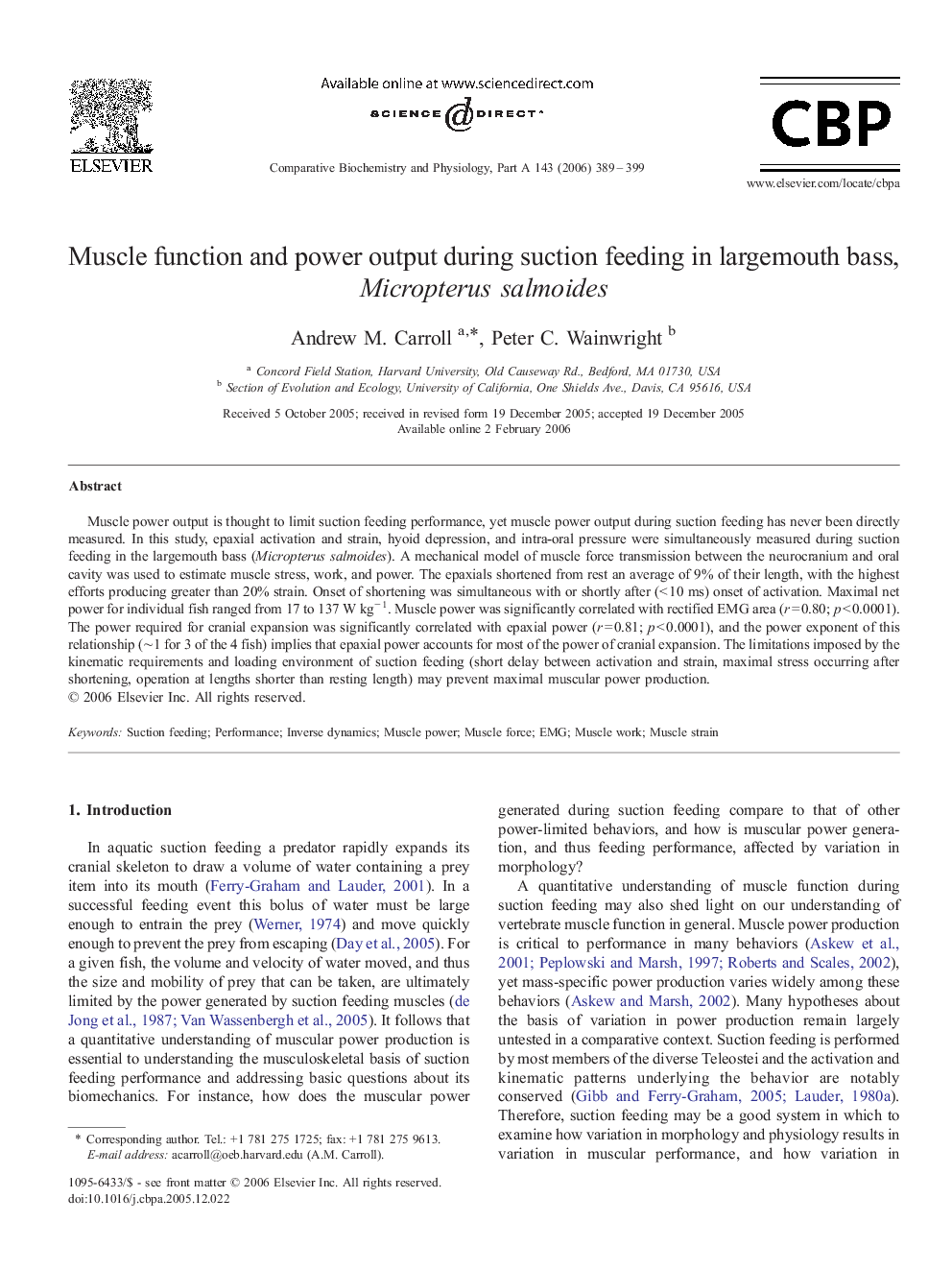| Article ID | Journal | Published Year | Pages | File Type |
|---|---|---|---|---|
| 1973954 | Comparative Biochemistry and Physiology Part A: Molecular & Integrative Physiology | 2006 | 11 Pages |
Abstract
Muscle power output is thought to limit suction feeding performance, yet muscle power output during suction feeding has never been directly measured. In this study, epaxial activation and strain, hyoid depression, and intra-oral pressure were simultaneously measured during suction feeding in the largemouth bass (Micropterus salmoides). A mechanical model of muscle force transmission between the neurocranium and oral cavity was used to estimate muscle stress, work, and power. The epaxials shortened from rest an average of 9% of their length, with the highest efforts producing greater than 20% strain. Onset of shortening was simultaneous with or shortly after (< 10 ms) onset of activation. Maximal net power for individual fish ranged from 17 to 137 W kgâ 1. Muscle power was significantly correlated with rectified EMG area (r = 0.80; p < 0.0001). The power required for cranial expansion was significantly correlated with epaxial power (r = 0.81; p < 0.0001), and the power exponent of this relationship (â¼1 for 3 of the 4 fish) implies that epaxial power accounts for most of the power of cranial expansion. The limitations imposed by the kinematic requirements and loading environment of suction feeding (short delay between activation and strain, maximal stress occurring after shortening, operation at lengths shorter than resting length) may prevent maximal muscular power production.
Keywords
Related Topics
Life Sciences
Biochemistry, Genetics and Molecular Biology
Biochemistry
Authors
Andrew M. Carroll, Peter C. Wainwright,
